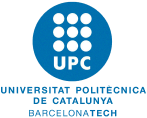News
Sampling at the Urban Pruning Valorization Station
Definition of Compost 0-20 and Semi-Compost from Pruning

Last Thursday, January 9th, a sampling was conducted at the Urban Pruning Valorization Station (EVUP) to identify the exact characteristics of the products known as Compost 0-20 and Semi-Compost from Pruning.
Sampling is a key technique for analyzing and characterizing the properties of materials derived from decomposition and valorization processes. At the EVUP in l’Ametlla del Vallès, we conduct periodic sampling to ensure the quality of final products derived from the decomposition of pruning and gardening waste from the municipality.
These materials result from decomposition and specific treatment processes aimed at producing beneficial products for the population of the same municipality where the EVUP is located. Compost 0-20 is a mature product with very small dimensions and a high nutrient content, making it ideal for agricultural and gardening soil. On the other hand, Semi-Compost from Pruning is a material with the same origin but subjected to a different treatment process, mainly involving less thorough screening. As a result, the material may have more irregular sizes, based on a Compost 0-20 base.
Parameters Analyzed During Sampling
The sampling focused on determining several essential parameters to evaluate the quality and suitability of these materials:- Maximum Length The maximum dimension of the material in each sample was measured, an important aspect for determining the maturity and suitability of the compost or semi-compost for its intended use.
- Coarse Fraction The percentage of large particles was identified, which is much lower in the case of Compost 0-20, indicating a more advanced decomposition process.
- Fine Fraction In Compost 0-20, the fine fraction is predominant. In Semi-Compost from Pruning, although it also contains a significant proportion of fine fraction, the main difference lies in a 37% proportion of irregular material with larger dimensions.
- Main Fraction The predominant fraction in each material was analyzed to identify its composition and suitability for different uses.
Characteristics of Compost 0-20 and Semi-Compost from Pruning
- Compost 0-20: This mature product, created from the decomposition of pruning and gardening waste, has a high proportion of fine fraction and homogeneous dimensions, making it suitable for agricultural or landscaping applications.
- Semi-Compost from Pruning: This less processed material contains a larger proportion of coarse fraction and particles with greater dimensions. It can be used in applications requiring slower degradation or as a raw material for additional treatments.
Importance of Sampling
Sampling not only ensures the quality of the produced materials but also guarantees their traceability and compliance with environmental and sustainability standards. Through this process, the EVUP contributes to the responsible management of green waste in the municipality, promoting reuse and circular economy. This most recent sampling confirmed that Compost 0-20 and Semi-Compost from Pruning meet the established criteria for their respective applications, thus reinforcing the station’s role as a reference point in green waste valorization. For more information on the characteristics of the products from Self-Managed EVUPs, please visit the Products and Services page. References: DCT General DictionaryDate: 01/13/2025









